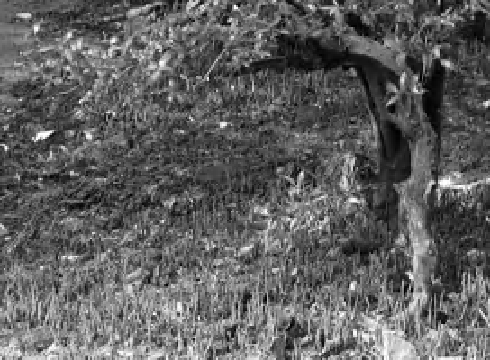Geoscience Reference
In-Depth Information
their exposure to the open sea, tidal action and
inl ux of fresh water (Mahajan 2010). Studies
further indicate that the Bangladeshi section of
the Sundarbans exhibits greater species com-
plexity and structure than their Indian counter-
parts, which may in part be due to variations in
salinity levels (Food and Agriculture Organiza-
tion 2007). Cintron and Novelli's (1984) general-
ized categorization of fringe, basin, and riverine
mangroves characterizes mangrove zonation
based on tidal action and salinity levels.
• The fringe zone comprises the front range of
mangroves facing the daily onslaught of tidal
action and higher salinity levels. Vegetation
adaptations include species that exhibit high
salt tolerance and buttressed root systems.
Such prop root systems serve to anchor trees
and dissipate the energy of strong tides and
winds as well as for aeration. In the case of
the Sundarbans, species such as
Rhizophora
(red mangrove) and
Bruguiera
are often
found in this zone, which may experience
polyhaline or mesohaline conditions.
Similarly,
Sonneratia
and
Avicennia
are
also common and quite well adapted to
diurnal tidal action (Gopal and Chauhan
2006).
Avicennia
develop pneumatophores,
which are specialized root adaptations that
aid respiration under waterlogged condi-
tions (Fig. 15-3). The roots extend upward
between 15 and 20 cm above the soil surface
from below-surface lateral root systems. To
deal with high salinity levels, species like
Avicennia
also secrete salt through their
leaves, with salt deposits often visible on the
leaf surface. In other cases, species concen-
trate salts in the leaves which are then shed,
or species may absorb additional water to
dilute the concentration of salt in their
tissues, giving rise to thick and l eshy suc-
culent leaves (Mahajan 2010).
• Basin mangroves are generally found in
sheltered inland spaces behind the front
range of fringe-zone mangroves. They are
also found in shallow depressions that may
be l ooded during high tide. Due to inade-
quate drainage, water may accumulate and
stagnate in pools within this zone.
Figure 15-3.
Pneumatophores rising 15-20 cm above
the soil surface from lateral roots aiding respiration in
Avicennia marina
(gray mangrove). Photo by Firooza
Pavri.
• Riverine mangroves occur along the banks
of rivers, estuaries, and creeks in coastal
regions. They may range far inland from the
coast and are generally exposed to regular
fresh-water inl uxes, along with nutrient and
sediment loads brought down by rivers. With
tidal extents reaching far inland into the
Sundarbans, these riverine mangrove zones
extend into the interior regions of the
Ganges Delta traversed by a dense network
of channels and creeks. Generally, this zone
experiences far lower salinity levels and a
lower incidence of tidal inundation (Mahajan
2010). The famous
Heritiera fomes
may be
found in this zone and can grow up to a
height of 25 m under ideal conditions.
Human occupation of the Gangetic Delta and
Sundarbans region dates back to early human
settlement of this part of South Asia. The region
also appears frequently in historical accounts
which detail the settlement and agricultural
fertility of the delta (Chakrabarti 2009). More
comprehensive accounts emerge from early
nineteenth-century British-led surveys of the
region and colonial reclamation efforts that
focused on using the forests for timber produc-
tion, harvesting animals, or converting the delta
swamp forests into agricultural land for rice
cultivation. The conventional wisdom at the
time regarded wetlands as “wastelands” that





